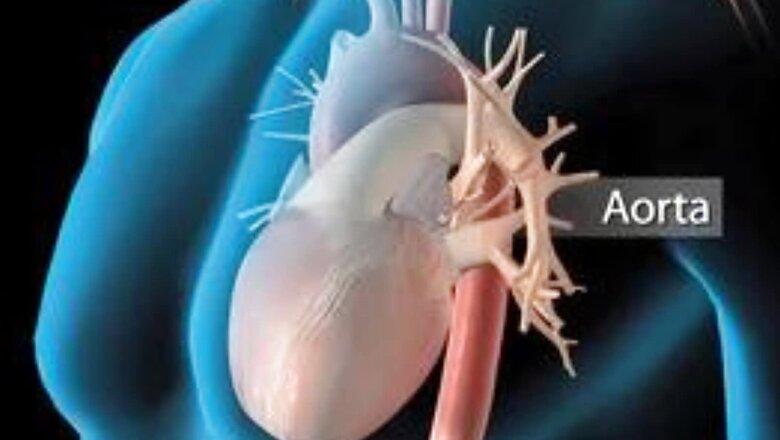
views
The aorta is the body’s biggest artery. It transports blood from the heart to the rest of your body. It has the shape of a curved candy cane. The ascending aorta rises from the heart. The descending aorta returns to your abdomen. Any artery can develop an aneurysm. An aortic aneurysm occurs when there is a weakening in the aortic wall. Blood pressure from the artery generates a balloon-like protrusion in the weak section of the aorta and this condition is known as aortic aneurysm, a medical term for this protrusion. It’s often confused with heart attack as the symptoms are quite similar. Aortic aneurysm can be detected with a CT scan.
Risk Factors
The family history and lifestyle habits might both increase the risk of developing an aortic aneurysm in many people. The risk of Aortic aneurysms is higher among the following categories of people:
- Smokers
- A person over the age of 65
- Those with a family history of aortic aneurysm
- People with high blood pressure or hypertension
Causes
An aortic aneurysm is generally caused by unknown factors. However, Atherosclerosis (narrowing of the arteries), Inflammation in arteries and family history of the disease have been found to be a few major causes of the disease.
Symptoms
A ruptured aneurysm can cause the following symptoms:
- Feeling dizzy or lightheaded.
- Rapid heartbeat
- Sudden and severe chest, stomach, or back pain.
- Difficulty in breathing
- Feeling full with intake a little food or bloating
- Difficulty in swallowing food
- Diagnosis and Prevention
Detection of an aortic aneurysm at an early stage or before it ruptures enhances the chances of survival of the patient. The condition can be diagnosed through a CT scan.
An aortic aneurysm is more likely to occur in those who have high blood pressure, high cholesterol, or use tobacco products. The risk of the disease can be lowered by leading a healthy lifestyle and improving heart health.
Many aneurysms form without showing any symptoms. These aneurysms are often discovered by doctors during standard checkups or screenings of patients. Apart from CT scans, the disease can be found through CAT scans and ultrasound tests.
Read all the Latest Lifestyle News and Breaking News here




















Comments
0 comment